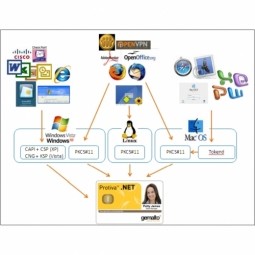Technology Category
- Application Infrastructure & Middleware - Event-Driven Application
Applicable Industries
- Education
- Life Sciences
Applicable Functions
- Quality Assurance
Use Cases
- Additive Manufacturing
- Supply Chain Visibility
- Time Sensitive Networking
Services
- System Integration
- Training
About The Customer
Chris O’Brien Lifehouse is a non-profit cancer hospital based in Sydney, Australia. The hospital provides an integrated service including advanced onco-surgery, chemotherapy, radiation therapy, clinical trials, research, education, complementary therapies, and psychosocial support. The hospital opened in 2013 with best-in-class clinical and nonclinical systems. The hospital uses Nintex K2 Five to gain greater visibility into processes, save time, deliver value to the organization, and focus more on quality of care.
The Challenge
Chris O’Brien Lifehouse, a leading cancer hospital based in Sydney, Australia, was grappling with the challenge of improving its legal processes. The hospital had several systems in place for visibility and consistency, but a large number of manual processes were still being relied upon. The hospital had turned to SharePoint and InfoPath to improve these processes, but found that they still required more speed in delivering the end product and more visibility into the processes. They needed a robust, flexible solution that could integrate with, and pull data from, several systems simultaneously. Additionally, they needed forms and workflows that were simple enough for end users to utilize.
The Solution
The hospital turned to K2 Software to digitize workflows and forms, thereby increasing accountability and efficiency. K2 Software provided Lifehouse with a quick and easy solution that was superior to anything else they had witnessed in the market. The hospital implemented several K2 Software solutions across the organization, all of which received positive feedback. The Policies and Procedures automated solution, made up of different workflows, greatly reduced the time needed to monitor and report. It allowed staff to submit a document for review, alert reviewers, add comments, and provided feedback mechanisms and independent task allocations. The solution’s workflow view helped them find bottlenecks and check the status of workflows without developer interventions. The Printing Application workflow increased accountability for large volumes of color printing and copying, giving users the ability to apply for printing privileges via a web form, alert approvers of a new application quickly, and integrate groups with an active directory of approved applications.
Operational Impact
Quantitative Benefit

Case Study missing?
Start adding your own!
Register with your work email and create a new case study profile for your business.
Related Case Studies.

Case Study
Corporate Identity Solution Adds Convenience to Beckman Coulter
Beckman Coulter wanted to implement a single factor solution for physical and remote logical access to corporate network. Bechman Coulter's users were carrying smart card badges for doors, but also needed a one-time password token to access to our corporate network when they were not in the office. They wanted to simplify the process.

Case Study
IoT platform Enables Safety Solutions for U.S. School Districts
Designed to alert drivers when schoolchildren are present, especially in low-visibility conditions, school-zone flasher signals are typically updated manually at each school. The switching is based on the school calendar and manually changed when an unexpected early dismissal occurs, as in the case of a weather-event altering the normal schedule. The process to reprogram the flashers requires a significant effort by school district personnel to implement due to the large number of warning flashers installed across an entire school district.

Case Study
Embracing Business Success in Real Time
· Increase control over growing Big Data to improve business decisions · Manage data for 28,000 biotechnology stockkeeping units in the fields of microbiology, molecular biology, animal cell cultures, plant tissue cultures, and lab ware for laboratory chemicals · Accelerate report generation and analysis with real-time data

Case Study
Revolutionizing Medical Training in India: GSL Smart Lab and the LAP Mentor
The GSL SMART Lab, a collective effort of the GSL College of Medicine and the GSL College of Nursing and Health Science, was facing a challenge in providing superior training to healthcare professionals. As clinical medicine was becoming more focused on patient safety and quality of care, the need for medical simulation to bridge the educational gap between the classroom and the clinical environment was becoming increasingly apparent. Dr. Sandeep Ganni, the director of the GSL SMART Lab, envisioned a world-class surgical and medical training center where physicians and healthcare professionals could learn skills through simulation training. He was looking for different simulators for different specialties to provide both basic and advanced simulation training. For laparoscopic surgery, he was interested in a high fidelity simulator that could provide basic surgical and suturing skills training for international accreditation as well as specific hands-on training in complex laparoscopic procedures for practicing physicians in India.

Case Study
Implementing Robotic Surgery Training Simulator for Enhanced Surgical Proficiency
Fundacio Puigvert, a leading European medical center specializing in Urology, Nephrology, and Andrology, faced a significant challenge in training its surgical residents. The institution recognized the need for a more standardized and comprehensive training curriculum, particularly in the area of robotic surgery. The challenge was underscored by two independent studies showing that less than 5% of residents in Italian and German residency programs could perform major or complex procedures by the end of their residency. The institution sought to establish a virtual reality simulation lab that would include endourological, laparoscopic, and robotic platforms. However, they needed a simulator that could replicate both the hardware and software of the robotic Da Vinci console used in the operating room, without being connected to the actual physical console. They also required a system that could provide both basic and advanced simulation training, and a metrics system to assess the proficiency of the trainees before they performed surgical procedures in the operating theater.

Case Study
Edinburgh Napier University streamlines long-distance learning with Cisco WebEX
• Geographically dispersed campus made in-person meetings costly and inconvenient.• Distance-learning programs in Malaysia, India, and China required dependable, user-friendly online tools to maximize interaction in collaborative workspaces.• Virtual learning environment required a separate sign-in process, resulting in a significant administrative burden for IT staff and limited adoption of collaboration technology.



